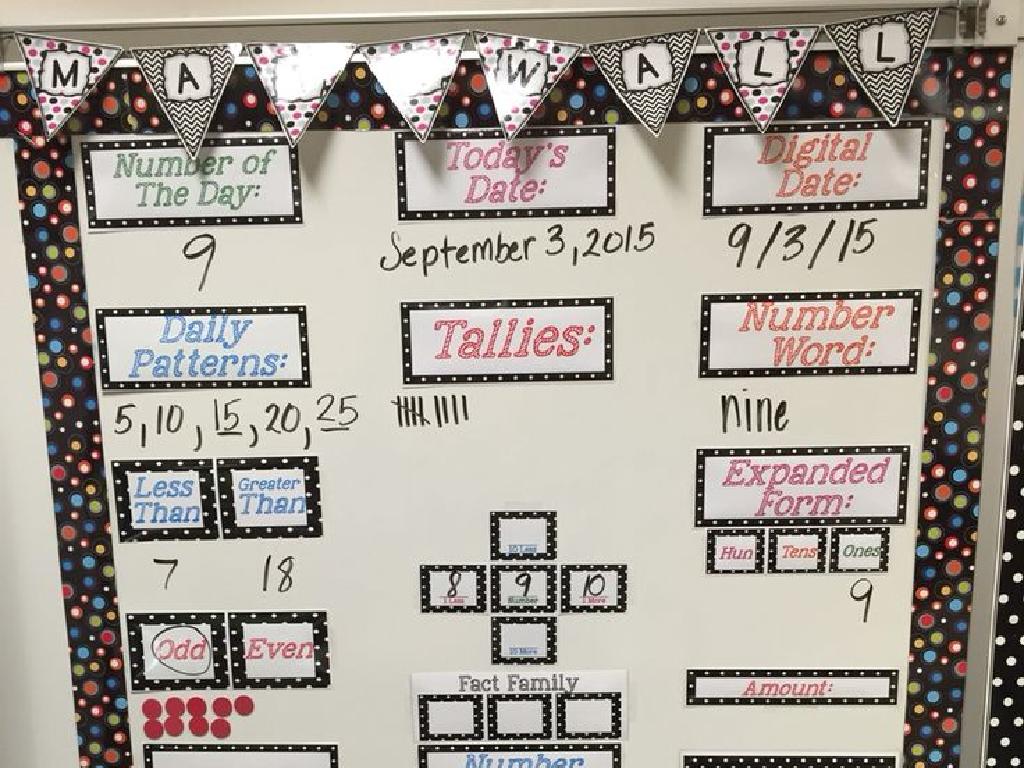The U.S.-Mexican War
Subject: Social studies
Grade: Eighth grade
Topic: The Antebellum Period
Please LOG IN to download the presentation. Access is available to registered users only.
View More Content
The Antebellum Period and the U.S.-Mexican War
– Antebellum Period: 1781-1860 overview
– A time of growth and tension before the Civil War
– Key events before the U.S.-Mexican War
– Texas Annexation, Manifest Destiny, and border disputes
– Cultural climate of the era
– Shifts in social norms, expansion of slavery, and reform movements
– Economic and political climate
– Industrialization in the North, expansion of plantation economy in the South, and rising sectionalism
|
This slide introduces students to the Antebellum Period, a pivotal era in American history that set the stage for the U.S.-Mexican War. It’s important to convey the complexity of this time, marked by rapid expansion and deepening regional divisions. Highlight the key events that led to the war, such as the annexation of Texas and the concept of Manifest Destiny. Discuss the cultural aspects, including the rise of the abolitionist movement and social reforms. Explain the economic differences between the industrializing North and the agrarian South, as well as the political tensions that arose from these differences. This background will help students understand the multifaceted causes of the U.S.-Mexican War.
The U.S.-Mexican War: An Overview
– Understanding the U.S.-Mexican War
– A conflict between the U.S. and Mexico from 1846-1848
– Causes: Destiny, Annexation, Disputes
– Manifest Destiny belief, Texas joining the U.S., and border disagreements led to war
– The pivotal year: 1846
– 1846 marked the formal start of hostilities
– War’s impact on U.S. expansion
|
This slide provides a brief overview of the U.S.-Mexican War, setting the stage for a deeper discussion on its causes and consequences. The war, which lasted from 1846 to 1848, was primarily driven by the U.S. ideology of Manifest Destiny, the contentious annexation of Texas, and border disputes. The year 1846 is significant as it marks the beginning of the war, which resulted in the U.S. acquiring territories that make up the southwestern states today. This conflict played a crucial role in the expansion of the United States and shaped the nation’s borders. Encourage students to consider how the concept of Manifest Destiny influenced American actions and policies during this period.
Key Figures of the U.S.-Mexican War
– President James K. Polk’s leadership
– Polk advocated for Manifest Destiny and led the U.S. into war.
– Mexican President Mariano Paredes
– Paredes, a conservative leader, opposed the annexation of Texas.
– General Zachary Taylor’s impact
– Taylor won crucial battles, including Palo Alto and Buena Vista.
– General Winfield Scott’s strategies
– Scott’s Mexico City campaign was vital for the U.S. victory.
|
This slide introduces students to the key political and military leaders of the U.S.-Mexican War. President James K. Polk’s expansionist policies and belief in Manifest Destiny were central to the U.S. entering the war. Mexican President Mariano Paredes’ opposition to the annexation of Texas by the U.S. set the stage for conflict. General Zachary Taylor, also known as ‘Old Rough and Ready,’ played a crucial role in early victories for the U.S. forces. General Winfield Scott’s successful campaign to capture Mexico City ultimately led to the U.S. victory. Discuss the motivations and actions of these figures, and how their leadership shaped the course of the war. Encourage students to consider the impact of these leaders’ decisions on the outcome of the war and on the territorial changes that followed.
Major Battles of the U.S.-Mexican War
– The Battle of Palo Alto
– First major conflict; U.S. victory led to Mexican retreat
– Siege of Veracruz
– Key naval siege; resulted in U.S. forces capturing an important port
– The Battle of Chapultepec
– Decisive U.S. victory; marked the fall of Mexico City
– Legacy of Niños Héroes
– Honors Mexican cadets who became martyrs defending Chapultepec Castle
|
This slide covers the pivotal battles of the U.S.-Mexican War, highlighting their strategies, outcomes, and historical significance. The Battle of Palo Alto marked the beginning of hostilities with a U.S. victory. The Siege of Veracruz was a critical moment where U.S. forces implemented a successful naval blockade and siege tactics to capture a strategic port. The Battle of Chapultepec is noted for the fierce defense by the Mexican military, including the Niños Héroes, six cadet heroes who became symbols of bravery. Discuss the impact of these battles on the course of the war and their lasting legacy in both American and Mexican history. Encourage students to reflect on the consequences of war and the valor of those who fought.
The Treaty of Guadalupe Hidalgo
– Peace through Treaty of Guadalupe Hidalgo
– Ended the U.S.-Mexican War in 1848, establishing peace.
– Territorial gains: Mexican Cession
– Mexico ceded large land areas including CA, NV, and UT.
– Long-term U.S.-Mexico relations impact
– Relations were strained, influencing future diplomacy.
– Significance in American history
|
The Treaty of Guadalupe Hidalgo was a pivotal moment in U.S. history, marking the end of the U.S.-Mexican War and resulting in significant territorial gains for the United States. This treaty not only expanded the U.S. territory by including present-day California, Nevada, Utah, and parts of several other states but also set the Rio Grande as the border between Texas and Mexico. The long-term effects on U.S.-Mexico relations were profound, with the treaty leaving a legacy of tension and conflict that would influence diplomatic relations for years to come. Discuss the significance of this treaty in shaping the political landscape of North America and its role in the broader narrative of American expansionism during the Antebellum period.
Impact of the U.S.-Mexican War on the United States
– U.S. territory expansion
– Added vast lands including CA, NV, and UT
– War’s influence on slavery debate
– Wilmot Proviso and tensions between North and South
– Economic changes after the war
– Growth in trade and industry, especially in new territories
– Social shifts post-war
– Shifts in population dynamics and American identity
|
The U.S.-Mexican War resulted in significant territorial gains for the United States, including present-day California, Nevada, Utah, and parts of several other states. This expansion played a crucial role in the national debate over slavery, as exemplified by the Wilmot Proviso, which sought to ban slavery in the new territories. Economically, the war spurred growth in trade and industry, particularly within the acquired territories, leading to a more robust and diversified American economy. Socially, the war induced shifts in population dynamics, with increased migration to the West, and contributed to a developing sense of American identity. Discuss the complex consequences of the war, emphasizing how it set the stage for the Civil War.
Debate: The U.S.-Mexican War Perspectives
– Divide into Pro-war and Anti-war groups
– Present arguments from today’s lesson
– Engage in open floor discussion
– Reflect on the war’s impact and legacy
|
This class activity is designed to deepen students’ understanding of the U.S.-Mexican War by exploring different perspectives through debate. Divide the class into two groups, with one representing the Pro-war stance and the other the Anti-war stance. Each group will use information from today’s lesson to form their arguments. After presentations, open the floor for a guided discussion, allowing students to question and challenge each group’s viewpoints. Conclude with a reflection on the long-term effects of the war on both the United States and Mexico. Possible activities: 1) Role-play as historical figures, 2) Create propaganda posters, 3) Write a persuasive speech, 4) Hold a mock trial to assess the war’s justification, 5) Compose letters from the perspective of soldiers.






